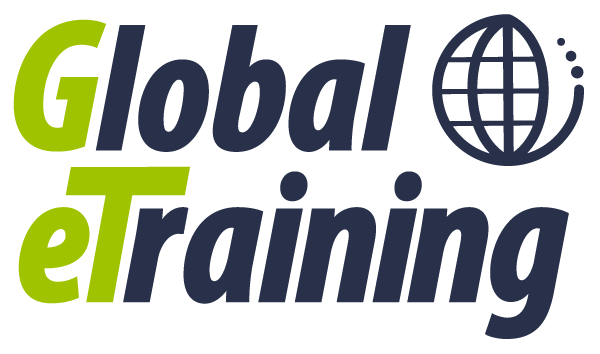
In the fast-evolving architecture, engineering, construction (AEC), manufacturing and geospatial industries, innovation is non-negotiable. From AI-powered workflows to digital twins, cloud collaboration to augmented reality—new technologies are continuously changing the game. Yet despite the possibilities, many firms struggle to move beyond the pilot phase and achieve lasting implementation.
Why? Because adopting new tech isn’t just a technical challenge—it’s a human one.
The Real Barriers to Tech Adoption
According to a recent McKinsey report, fewer than 30% of digital transformation efforts succeed. For the AEC industry, this number is even lower due to the sector’s complexity, fragmented teams and deeply ingrained legacy workflows.
Common pitfalls include:
- Lack of user buy-in: If your teams don’t see the value or weren’t involved in the decision, adoption slows.
- Inconsistent workflows: When different teams use tools in different ways, outcomes become fragmented.
- Poor change management: Without clear communication and support, even the best tools become shelfware.
And perhaps most critically: firms underestimate the importance of continuous training.
The Role of Training in Driving Tech Success
Training is often seen as a one-time onboarding activity—but that approach simply doesn’t cut it in a world where tools, standards and project needs change constantly.
Studies show that companies that invest in structured, ongoing training see up to a 353% ROI, according to research from IBM. For digital tools in AEC, it’s even more important: a Dodge Data & Analytics study found that firms with high levels of training were two times more likely to report successful BIM adoption compared to those without.
But training isn’t just about technical proficiency—it’s about creating a culture of learning that enables adaptability, collaboration and innovation at scale.
Building a Culture of Learning: The Real Driver of Lasting Innovation
While continuous training plays a critical role in overcoming resistance and improving proficiency, the ultimate enabler of technology adoption isn’t just what people learn—it’s the environment they learn in.
Firms that succeed with innovation don’t treat training as an isolated event. They foster a culture of learning—one where development is ongoing, curiosity is encouraged and adapting to new tools becomes second nature.
This mindset doesn’t just support technology implementation—it transforms it.
Learning Culture as a Talent Magnet
In an industry where the demand for skilled professionals far exceeds supply, learning and development opportunities have become a key differentiator. A 2024 LinkedIn study found that 94% of employees say they would stay at a company longer if it invested in their learning. For AEC and manufacturing firms competing for top talent, this is more than a retention stat—it’s a recruitment strategy.
By visibly committing to growth, you not only attract the best candidates—you keep them engaged, empowered and future-ready.
Better Learning = Faster, Smoother Adoption
An effective learning culture accelerates adoption from the ground up. When training is embedded into daily workflows—through things like microlearning and on-demand training resources—new tools feel less like a disruption and more like a natural evolution. The result? Elevated technical skills, which leads to elevated technology adoption, leaving your team more equipped to innovate than ever before!
Instead of reacting to change, your workforce becomes proactive—ready to experiment, iterate and lead with technology.
Learning as a Reputation Builder
In a competitive market, how your firm approaches innovation speaks volumes. Organizations that prioritize upskilling and adaptability aren’t just more efficient internally—they’re seen as leaders externally.
Deloitte research shows that companies with strong learning cultures are 92% more likely to develop novel products and processes, and more than 50% more productive than those without. That kind of agility isn’t just good for operations—it’s good for business.
From Adoption to Transformation
Ultimately, building a culture of learning aligns your people, processes and platforms around continuous improvement. It ensures that every new tool doesn’t just get implemented—it gets integrated, refined and fully leveraged.
When your teams are constantly learning, your technology investments become long-term drivers of value—not just temporary solutions.
Other Best Practices for Tech Implementation
So, how else can your firm turn technology investments into tangible value?
Here are four additional proven strategies:
- Start with stakeholder alignment: Before rolling out a new tool, involve key team members from all departments. This ensures you’re solving the right problems and gaining early champions.
- Standardize workflows with custom training: Whether it’s digital twin data capture or model coordination in the cloud, having a team fully trained in consistent processes that are customized to your projects and company reduces friction and supports quality control.
- Measure what matters: Adoption isn’t success. Define KPIs—like reduced rework, improved collaboration, elevated technical skill proficiency or project time savings—and track them over time.
Make learning continuous: Embed training into project workflows. Use LMS platforms, microlearning and on-demand training tools so that learning happens in context—not just in a classroom.
Real-World Examples
One major civil engineering firm successfully deployed cloud-based design tools across regional offices—but adoption didn’t take off until they rolled out a targeted training program. Once training was integrated into everyday workflows, usage jumped by 60%, and errors related to outdated file versions dropped by 40%.
In another case, a global manufacturing firm rolled out AI-powered scheduling software designed to streamline production timelines and reduce delays. But instead of embracing the tool, project managers pushed back—concerned it would replace their expertise or overcomplicate their workflows.
Rather than doubling down on enforcement, leadership pivoted to education. They launched a targeted, customized training initiative that taught both how to use the tool and why it mattered. Sessions highlighted real-world examples of how AI could flag scheduling conflicts early, reduce manual data entry and free up time for higher-value decision-making.
The tone shifted from “mandatory tool” to “valuable resource.” Within three months, adoption jumped by 40%. Within six, it was embedded across departments—with managers not only using it, but recommending it to others. What changed? The tech stayed the same. But the mindset changed through strategic, purposeful training.
Final Thoughts: Empower People, Elevate Technology
Technology alone doesn’t transform organizations—people do. The most advanced tools in the world won’t deliver value unless your teams feel confident using them, supported in learning them and inspired to innovate with them. That’s why successful tech adoption isn’t just about implementation—it’s about empowerment.
By building a culture of continuous learning, aligning training with real-world workflows, and leading with purpose, AEC, manufacturing and geospatial firms can unlock the full potential of their technology investments.
Want to Future-Proof Your Tech Investments?
Build a learning culture that scales with you. At Global eTraining, we help AEC, manufacturing and geospatial firms turn training into a competitive advantage—with customizable, on-demand courses that fit your workflows.
Explore our platform for free or connect with us via a one-on-one demo to learn how to make your next tech rollout a lasting success.
